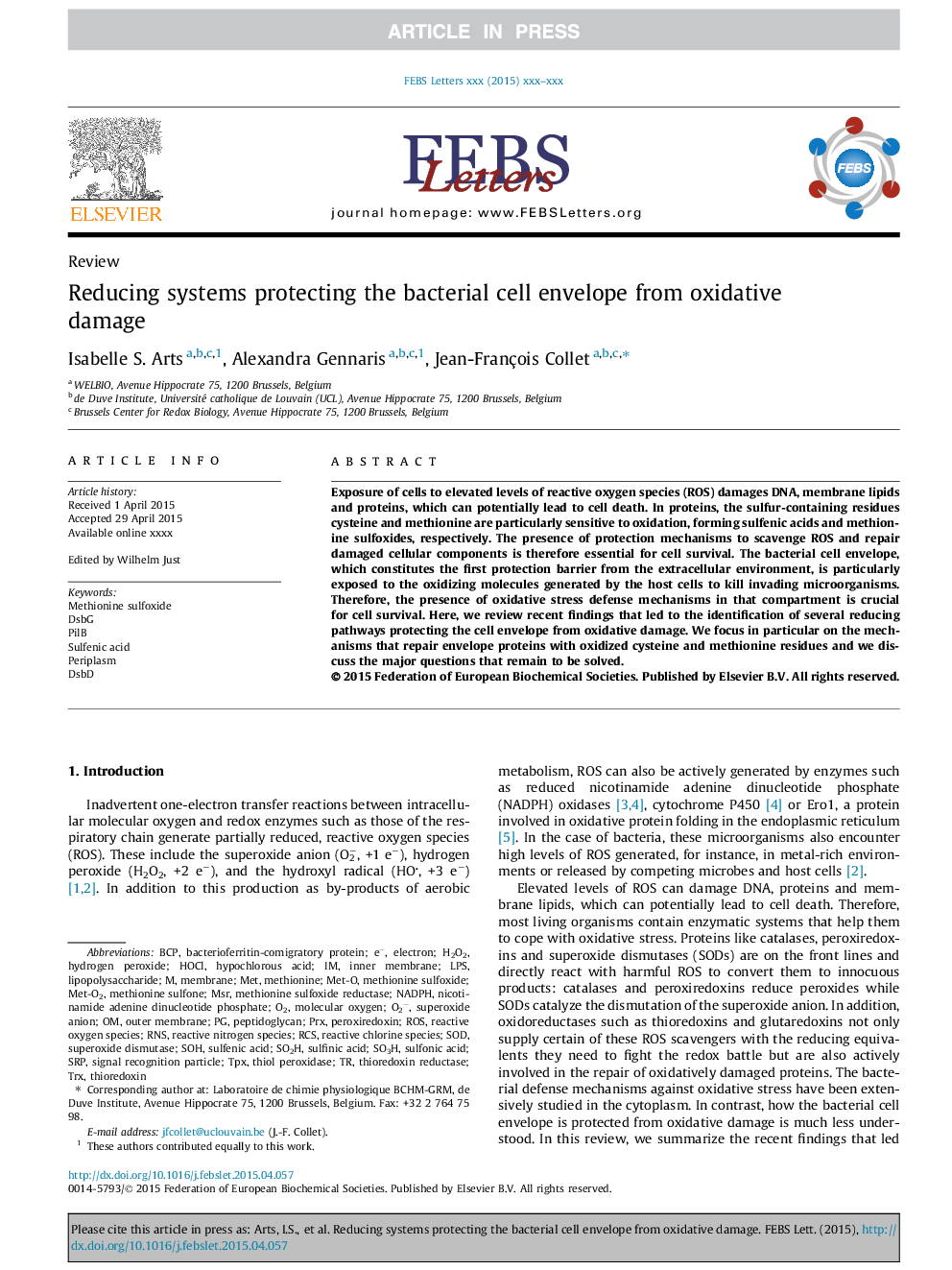| Article ID | Journal | Published Year | Pages | File Type |
|---|---|---|---|---|
| 10869807 | FEBS Letters | 2015 | 10 Pages |
Abstract
Exposure of cells to elevated levels of reactive oxygen species (ROS) damages DNA, membrane lipids and proteins, which can potentially lead to cell death. In proteins, the sulfur-containing residues cysteine and methionine are particularly sensitive to oxidation, forming sulfenic acids and methionine sulfoxides, respectively. The presence of protection mechanisms to scavenge ROS and repair damaged cellular components is therefore essential for cell survival. The bacterial cell envelope, which constitutes the first protection barrier from the extracellular environment, is particularly exposed to the oxidizing molecules generated by the host cells to kill invading microorganisms. Therefore, the presence of oxidative stress defense mechanisms in that compartment is crucial for cell survival. Here, we review recent findings that led to the identification of several reducing pathways protecting the cell envelope from oxidative damage. We focus in particular on the mechanisms that repair envelope proteins with oxidized cysteine and methionine residues and we discuss the major questions that remain to be solved.
Keywords
Related Topics
Life Sciences
Agricultural and Biological Sciences
Plant Science
Authors
Isabelle S. Arts, Alexandra Gennaris, Jean-François Collet,
